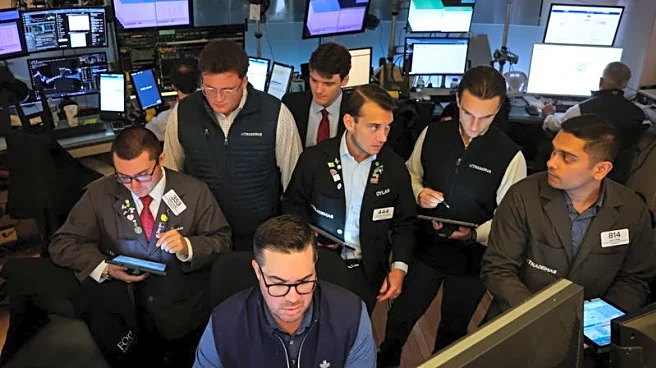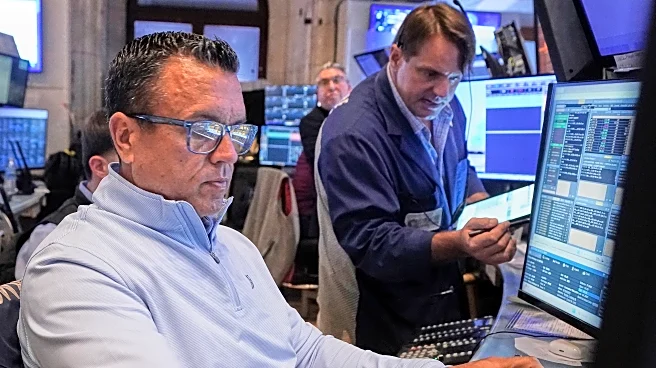What's Happening?
The S&P 500 and Nasdaq indexes reached new closing highs for the second consecutive day, driven by investor optimism regarding potential interest rate cuts by the Federal Reserve. The market's positive performance was bolstered by signs that U.S. tariffs on imports have not significantly impacted consumer prices, alleviating some concerns about trade uncertainties. Despite the overall market gains, certain technology stocks, including Nvidia, Alphabet, and Microsoft, experienced declines as investors sought new growth opportunities. Apple, however, saw an increase following reports of its expansion into AI-powered robots and smart home devices. The Russell 2000 index, which tracks small-cap companies sensitive to interest rate changes, also saw gains, reaching a six-month high. Traders are now anticipating a 25 basis-point rate cut, with Treasury Secretary Scott Bessent suggesting a possible half-point cut due to weak employment figures.
Why It's Important?
The anticipation of interest rate cuts by the Federal Reserve is significant as it could lead to lower borrowing costs, potentially stimulating economic growth. This development is particularly crucial for industries reliant on consumer spending and investment, such as technology and healthcare. The recent gains in the stock market reflect investor confidence in the potential easing of monetary policy, which could mitigate the impact of trade tensions and inflation concerns. However, the elevated valuations of stocks, especially in the technology sector, suggest that investors are cautious about the sustainability of these gains. The broader economic implications include potential shifts in investment strategies and increased market volatility as stakeholders react to monetary policy changes.
What's Next?
The Federal Reserve's decision on interest rate cuts will be closely monitored by investors and policymakers. The central bank's assessment of inflationary pressures from tariffs will play a critical role in determining the timing and magnitude of rate adjustments. Additionally, sectors such as healthcare, which have been underperforming, may continue to see gains if monetary easing supports broader economic recovery. Market participants will also watch for further developments in trade negotiations and their impact on consumer prices. The potential for aggressive rate cuts could lead to increased market activity and shifts in asset allocation strategies.
Beyond the Headlines
The potential rate cuts by the Federal Reserve highlight the ongoing challenges in balancing economic growth with inflation control. The decision-making process involves complex considerations of trade impacts, employment data, and consumer price trends. The broader implications include ethical considerations regarding the equitable distribution of economic benefits and the long-term sustainability of growth driven by monetary policy. Additionally, the expansion of companies like Apple into AI and smart home technologies reflects a shift towards innovation-driven growth, which could redefine industry standards and consumer expectations.













